This was published 8 years ago
Victoria regional travel guide: Best places to eat, drive and stay in regional Victoria
By Anthony Dennis
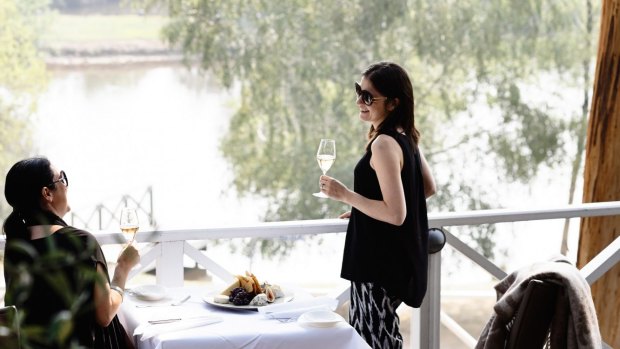
The Lake House, Daylesford. Credit: Derek Salwell
My grand gourmet driving tour of Victoria really began, not just with a decisive left-hand turn at Tullamarine, the car pointed resolutely in the opposite direction of Melbourne, but with a conversation with the state's, and perhaps Australia's, finest regional chef. It was just before Dan Hunter opened Brae in late 2014, his internationally acclaimed restaurant tucked behind the Great Ocean Road west of Melbourne.
Hunter, who after having established his skills in the Michelin-starred hotspot of San Sebastian, Spain, returned to Australia to shake up the regional culinary scene at the Royal Mail Hotel in the shadows of the Grampians, remarked how much Victoria in many ways replicated a medium to large European country.
He spoke of the physical nature of the state, which made it relatively easy to travel between its regions, all close to the capital and its handful or so of big regional centres. "There's a fantastic diversity in terms of geography and this is reflected with the amount of different regional food offerings from restaurants through to markets and cellar doors and farm gates."
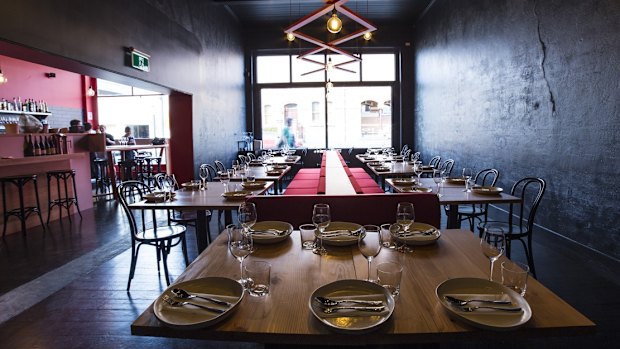
Catfish in Ballarat. Credit: Peter Schofield
Hunter, as he always does with his inventive, cerebral cooking, got me thinking. Could it now be possible, with the above factors in mind, to finally sustain a European-style gourmet driving tour of an Australian state? The indications were encouraging as I, a New South Welshman, I should declare, studied the map of the state, and the regional section of The Age Good Food Guide.
It contains 33 hats, the hat a definitive measure of an outstanding restaurant. Compare that with the 36 in The Sydney Morning Herald equivalent, with NSW having nearly 2 million more citizens. Furthermore, The Sydney Morning Herald Good Food Guide's regional dining section also incorporates Canberra.
Alla Wolf-Tasker, founder of the two-hatted Lake House in Daylesford, emphasised the strides that regional dining has made in a comparatively short period. "When, in 1979 [my husband] Allan and I first committed to building a destination restaurant in regional Victoria there was very little of anything of the sort at all," she says. "When people spoke about regional dining they were inevitably talking about Europe – about perhaps having enjoyed the cinghiale and porcini of autumnal Tuscany, the panisse and summer tomatoes of Provence or the feta and olives of the Greek Islands."
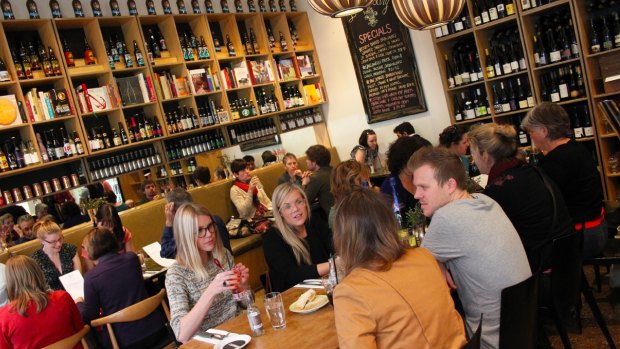
The Dispensary, Bendigo.
Australians simply didn't venture into the countryside with the expectation of "finding something wonderful to eat". Yet, before we get ahead of ourselves, it's worth remembering that despite the growing allure and maturity of the regional food and wine scene in not just Victoria but Australia as a whole, along with a better range and quality of accommodation choices, fewer of us have been bothering to holiday, let alone eat and drink, in our own backyards, preferring instead to travel overseas.
As Tourism Victoria's research indicates, while Victoria's population (aged 15 plus) has grown by 27 per cent since the year 2000, its residents are not travelling to regional Victoria at the same rate as in the past, with the average number of overnight trips down by 14 per cent during the same period.
So, from Tullamarine, I motor forth on a mission to test a theory and to gauge the state of regional dining in Australia – and, of course, to find something wonderful to eat and drink.
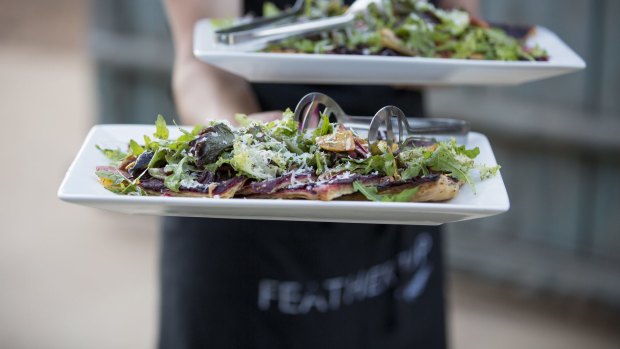
Beetroot tarte tatin from Feathertop Alfresco Dining.
DAY ONE Tullamarine to Ballarat, 114 kilometres
Until last year Ballarat, a short hop from Melbourne Airport, would have qualified as a laughably inauspicious beginning to a regional dining tour. But this is where my journey begins and where, fortuitously, the former gold-rush city has finally struck it lucky, scoring its first hat in The Age Good Food Guide, for, who would have thought, a modern Thai restaurant called Catfish (www.catfishthai.com.au).
Inside a modern 44-seat bordello-cum-art-gallery red and black-toned dining room and bar, chef Damien Jones, a protege of Australia's Thai masterchef, David Thompson at both Sydney's defunct Darley Street Thai and London's Nahm, has been working tirelessly on getting "The Rat" back on the culinary map.
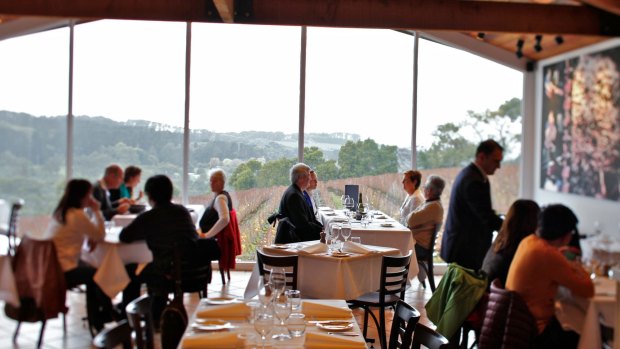
The one-hatted Paringa Estate in Red Hill.Credit: Eddie Jim
His polished Thai street-food influenced dishes are a spicy knockout with even a small selection of imaginative desserts (not normally a strength of any Asian restaurant) impressing.
DON'T MISS Ballarat may not boast a Siam heritage but its Chinese connections, which can be traced to the gold rush days, are profound. Fu Man Lou (fumanlou.com.au) is a fun modern dumpling bar nestled in Camp Street, one of Ballarat's most architecturally impressive avenues. It's the sort of cool Chinese restaurant-cum-cafe-cum-bar that every urban Australian neighbourhood deserves.
WHERE TO STAY A short drive from Ballarat is the landmark Lake House (www.lakehouse.com.au), a veritable bucolic temple of the good life. Doubles from $503 a night, minimum two-night stay, including dinner and breakfast.
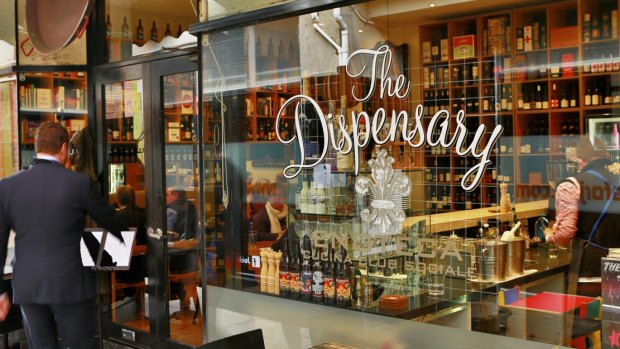
The Dispensary, Bendigo.Credit: Peter Schofield
See also: Twenty reasons to visit Ballarat
DAY TWO Ballarat to Daylesford, 42 kilometres
All culinary country roads in Victoria, with a few notable more recent additions, inevitably still lead to the aforementioned Lake House, set in delightful Daylesford in central Victoria. Its legendary founder and owner, Alla Wolf-Tasker, was, three decades ago, one of the first to recognise the potential for a culture of regional dining in Australia, combined with sybaritic accommodation, the likes of which you'd normally expect to find in Europe. Lunch or dinner at the sophisticated yet relaxed two-hatted Lake House, with its emphasis on the finest local and Australian produce, remains the sort of special experience dining that's become rare in the big cities let alone the bush.
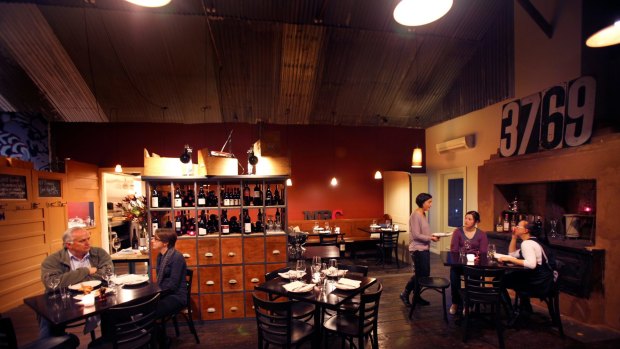
Mr Carsisi in Kyneton. Credit: Eddie Jim
DON'T MISS Lake House dominates the Daylesford dining scene but in any other town Mercato (www.mercatorestaurant.com.au), in a historic building dating to 1864, with skilled chef Richard Mee in the kitchen, would be a must-try.
WHERE TO STAY Spend a second night at Lake House, which has recently unveiled a series of new lodge rooms. If you're in the mood to splurge, book The Retreat, a stand-alone house, reminiscent in style to the best New Zealand luxury lodges.
See also: Spas, bars and no boys
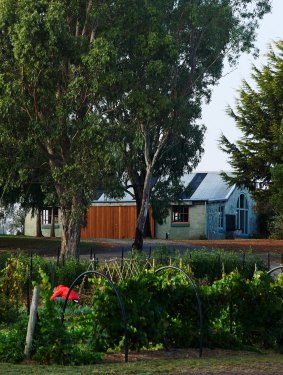
Brae Restaurant in Victoria.Credit: Colin Page
DAY THREE Daylesford to Bendigo, 75 kilometres
Bendigo, Victoria's other major gold-rush era regional city, likes to boast of its incipient laneway culture. And it really does more or less, mean "laneway", in the singular. Chancery Lane, which runs off the wonderfully named Pall Mall, Bendigo's grand, architecturally arresting main drag. The laneway has The Dispensary Bar & Diner (www.dispensarybendigo.com), which last year successfully (if the food is any indication) underwent the gastronomic equivalent of gender reassignment. A former heritage pharmacy, as the name suggests, The Dispensary dumped its Italian menu in favour of an even more accessible pan-Asian menu.
DON'T MISS Nowadays, the hatless Dispensary faces fierce competition from the one-hatted Masons of Bendigo (www.masonsofbendigo.com.au) as well as Mr Beebe's Eating House (www.mrbeebes.com.au).
WHERE TO STAY Proof that capital cities aren't the only places deserving of divergent design hotels, Bendigo's The Schaller Studio (www.artserieshotels.com.au) is part of the Melbourne-based Art Series Hotels group. Doubles from $115 a night.
See also: Twenty reasons to visit Bendigo
DAY FOUR Bendigo to Beechworth, 243 kilometres
After a series of small hops, it's time for me to make a bigger one as my gourmet tour moves further north to Beechworth, closer to the NSW border. By the time I reach what is one of Australia's most beautifully preserved heritage townships, I'm not only acquiring a growing girth but an appreciation of the depth of regional dining in Victoria. Dan Hunter really was on to something.
Alongside the likes of Lake House, the two-hatted Provenance (www.theprovenance.com.au), is one of Victoria's most distinguished regional restaurants with a trio of toques, however, remaining elusive for Michael Ryan, its chef and owner.
The setting of a 19th-century bank, gorgeous as it is, seems a little at odds with Ryan's ambitious Japanese-influenced cooking, backed by the best local seasonal produce and wines, as well as some exquisite sakes, with dishes such as spanner crab and nuka pickles, almond and shio koji milk, leeks, leek oil and Berkshire pork neck cooked in soy milk, radish and beets cooked in dashi, fermented pumpkin and burnt garlic oil. But there's no doubt that Provenance ranks as one of Australia's most interesting and valuable regional dining experiences.
DON'T MISS On the way to Beechworth I include a pit-stop in Kyneton, yet another of Victoria's handsome historic gold rush-era towns. After an obligatory stroll along the delightful restaurant, cafe and homewares-studded main street, I head for lunch at Mr Carsisi (www.mrcarsisi.com), housed in a rustic erstwhile ice-works. The food here is Middle Eastern, and top-notch, with chef Matt Fegan's wonderfully varied and informed mezze plates, such as roasted quince, medjool date, air-dried beef, ewe's feta and almond salad, well worth the diversion.
WHERE TO STAY Provenance's Ryan somehow juggles the demands of a premier restaurant with comfortable accommodation available in the former carriage house and stables at the rear of the building. Doubles from $290 a night.
See also: Twenty reasons to visit Beechworth
DAY FIVE Beechworth to Bright, 58 kilometres
One of Australia's most underrated driving routes, Victoria's Great Alpine Road (mind the crossing echidnas) connects Bright, the tourist town gateway to the Victorian High Country has emerged as a genuine major regional dining destination. When I visit two of the town's brightest one-hatted restaurants Simones (www.simonesbright.com.au) and Tani Eat & Drink (www.tanieatdrink.com.au), where Hamish Nugent, a protege of Michael Ryan's back at Provenance, is chef, both are closed. No worries. I head instead for lunch at Feathertop Alfresco Dining (www.boyton.com.au), a beautifully situated winery restaurant at Porepunkah, just outside Bright, with a laid-back menu highlighting the produce of the surrounding alpine region. Above the restaurant there's even some smart accommodation in the form of self-contained apartments.
DON'T MISS Housed in a historic former stables, Bright Chocolate (www.brightchocolate.com.au) makes superb and beautifully packaged single origin ethical chocolate from premium cacao beans sourced from Madagascar, Ecuador, Trinidad and Tobago and the Dominican Republic.
By night, head to Thirteen Steps (www.thirteensteps.com.au), so named because of the number of steps leading to the cellar wine bar and bistro or the convivial Bright Brewery (www.brightbrewery.com.au), a great spot not just for its "mountain-crafted beer" but also for a rowdy, and decent, casual meal with the locals.
WHERE TO STAY The luxuriously equipped, sunny studio retreats at The Buckland (www.thebuckland.com.au) deliver jaw-dropper views of Mount Buffalo and farmland. Doubles from $305 a night, minimum two nights stay.
See also: A quick guide to Bright
DAY SIX Bright to Healesville, 290 kilometres
I've literally bitten off more than I can chew. Sacrilege it may be, but after six days on the road, with about three times as many meals behind (or in) me, I decide to skip Victoria's much-vaunted Milawa and King Valley food and wine districts to push on to the Yarra Valley, my next stop further south. Levantine Hills (www.levantinehill.com.au), with its spectacularly designed dining room overseen by team Teage Ezard may have been stealing much of the attention in the Yarra Valley in recent times, but there's also Oakridge (www.oakridgewines.com.au) at Coldstream. Its modern cellar door is designed by the renowned Melbourne architects Denton Corker Marshall while up-and-coming chef Matt Stone, a poster boy of sustainable cooking, is in the kitchen, serving dishes based on Yarra Valley and regional Victoria produce.
DON'T MISS Check out the unique tasting course in which visitors don headphones to watch a video presentation of Oakridge's winemaker, David Bicknell, who takes guests on a journey through the vineyard's chardonnays.
WHERE TO STAY Dating to 1854, 32-room Chateau Yering is (home to the one-hatted Eleonore's (www.chateauyering.com.au) the definitive Yarra Valley lodgings. It's also close to attractions such as Yarra Valley Dairy (www.yvd.com.au), famed for its handmade farmhouse cheeses, and, of course, a plethora of premium wine cellar doors. Doubles from $395 a night.
See also: Get outta town: top 10 Melbourne day trips
DAY EIGHT Healesville to Red Hill, 98 kilometres
In just under 100 kilometres, the penultimate driving day on my tour takes me from the Yarra Valley and into the mountains of the Dandedongs then on to the seaside Mornington Peninsula. I'm out of luck again. Ten Minutes by Tractor (www.tenminutesbytractor.com.au), the Mornington's most-lauded restaurant, is closed on the day I'm here. But I'd hardly rate a lunch at the more restrained one-hatted Paringa Estate (www.paringaestate.com.au) at Red Hill a misfortune. Chef Julian Hills' skilled though understated dishes are the perfect match for the gorgeous, in-your-face views across geese-studded rolling hillside vineyards and beyond.
DON'T MISS Not every restaurant in the Mornington Peninsula is ensconced amid vines. The Long Table (www.thelongtable.com.au) is an unpretentious, ever-reliable diner in a small shopping complex. I time my drive on day nine from the Yarra Valley to the Mornington Peninsula, on the next leg of our tour, to include a pitstop at the superb Piggery Cafe, Burnham Beeches (www.piggerycafe.com.au) at Sherbrooke in the Dandenongs. The product of Melbourne superchef Shannon Bennett, this brilliant cafe is set in, as the name suggests, a restored piggery and stables. On the same property, Bennett is also slowly transforming Burnham Beeches, a 1930s art moderne mansion, into boutique accommodation.
WHERE TO STAY Polperro Wines (www.polperrowines.com.au) at Red Hill offers four modern, lavishly appointed villas overlooking the vineyard. For lunch and dinner, consider the winery's own and equally contemporary bistro. Doubles from $320 a night.
See also: Things to do in Red Hill, Victoria
DAY NINE Red Hill to Birregurra, 210 kilometres
I've left the best until l last as I head south to Sorrento and across Port Phillip Bay aboard the Queenscliff-Sorrento Ferry (www.searoad.com.au) and then across to Birregurra, a small, sleepy township tucked behind the Otway Ranges which front the Great Ocean Road. Dan Hunter, backed by the immense skills and experience he acquired during his time at the two Michelin-starred rated Mugaritz, near San Sebastian, Spain, redefined regional dining at the Royal Mail in Dunkeld in Central Victoria. But it's been Brae (www.braerestaurant.com) where he has really established his credentials.
After having endured the challenge of running both an acclaimed, far-flung regional restaurant with accommodation, Hunter and his wife Julianne could have been forgiven for making it a little easier on themselves with their latest venture. Not a chance: they have recently opened the first of six luxurious guest suites.
Of course, Brae is not about a good feed – it's the gastronomic equivalent of performance art, each dish a masterpiece in miniature, all elusively named with minimal descriptions "asparagus, sea butter, olive plant", "warm ricotta and nettle, roasted chicken and brassicas", "milk, honey and mandarin" on the spoken menu.
But, after a 10-day gastronomic odyssey, let's leave the last word not to Hunter but to Wolf-Tasker. "Eventually just as in Europe, we will have regions [in Victoria and Australia] known for their particular produce, seasonal specialities, animal husbandry and breeding," she says. "That's something that we are still growing. I look forward to being part of the further development in this exciting next chapter."
DON'T MISS Tiny as it may be, Birregurra's charming main street has enough shops and restaurants to keep visitors amused before and after their visit to Brae.
WHERE TO STAY Dating to the mid-19th century Ellminook (www.ellminook.com.au) is a charming old-fashioned, National Trust-classified heritage bed and breakfast set in a magnificent garden. Doubles from $180 a night.
Anthony Dennis travelled as a guest of Tourism Victoria (www.visitvictoria.com).
FIVE NON-FOODIE THINGS TO DO ALONG THE WAY
WALK THIS WAY Take a guided tour of Ballarat's glorious gold rush-era architecture with some of its streetscapes considered to be among the finest of the Victorian era outside of Britain. See www.ballaratheritagetours.com.au
ART OF THE STATE Bendigo, with its entrepreneurial art gallery, has transformed itself into a genuine regional cultural capital with major exhibitions designed to entice city-slickers. Its Marilyn Monroe exhibition runs until July 10. See www.bendigoartgallery.com.au
NORTHERN EXPOSURE Beechworth in north-east Victoria is a perfect base from which to explore some delightful surrounding villages, such as Yackandandah and Stanley, as well as a chance to brush up on your bushranger history with the courthouse where Ned Kelly's committal hearing was held in 1880 now a museum in the main street. See www.explorebeechworth.com.au
HER LATEST COMEBACK Coombe, the stunning former estate of Dame Nellie Melba at Coldstream in the Yarra Valley, opened to the public last year with a fine restaurant serving Peach Melbas, a small museum featuring memorabilia from the life of the celebrated soprano and guided tours of the home's extensive and eccentric gardens. See www.coombeyarravalley.com.au
OPEN ROAD Now receiving traffic again after last year's devastating bushfires, the Great Ocean Road is easily accessed from Brae, Victoria's greatest regional restaurant, located at the township of Birregurra. Drive across the scenic Otways to the seaside resort of Lorne on C151 in about 30 minutes. See www.visitgreatoceanroad.org.au
COUNTRY STYLE: ON THE STATE OF REGIONAL DINING
A trio of the stalwarts of Victorian regional dining – Dan Hunter of Brae, Alla Wolf-Tasker of Lake House and Michael Ryan of Provenance, discuss some of the issues surrounding regional dining in Australia.
HOW WOULD YOU DESCRIBE THE STATE OF REGIONAL DINING IN VICTORIA, AND AUSTRALIA. HOW HAS IT CHANGED AND EVOLVED?
DAN HUNTER, The main change has been the sheer amount of regional openings and customer interest in the concept of dining in the regions. There's been a definite wave of younger, well-trained and more experienced operators choosing to open venues in towns or areas that previously haven't had a strong representation. And the divide that may have existed in the past in terms of quality of dining between the major cities and regions is disappearing.
ALLA WOLF-TASKER, With few exceptions, it's now not possible to travel an hour out of a capital city without coming across at least a reasonably good general store, bakery or cafe, a cellar door and even a good restaurant. Beyond that, what we are also seeing is the development of really good regional restaurants. We are giving our city cousins a real run for their money.
MICHAEL RYAN, A writer recently expressed surprise at the quality of food on offer at some regional restaurants. I think we can mothball that line. Regional restaurants, particularly in Victoria, having been going strong for a long time now.
WHAT REMAIN THE BIGGEST CHALLENGES IN RUNNING A MAJOR REGIONAL RESTAURANT?
HUNTER All restaurants share similar challenges whether they are in the city or country. Attracting good long-term staff can be an issue but, then again, there are many more experienced people moving to regional areas. There are some older, out-of-date perceptions in Australia that if you're country you'll be cooking traditional country fare but that's thankfully on the way out.
WOLF-TASKER The challenges haven't changed all that much – it will always be the availability of skilled staff in regional areas and the juggling act of running a business that is often centred largely around weekends and public holiday, rather than evenly spread across the week.
RYAN Logistics are the biggest headache. If a delivery doesn't turn up, often you will have no recourse until the following week. And while the scarcity of staff is a problem across the board for all hospitality venues, it is amplified in regional areas.
WHAT BENEFITS DOES A HIGHLY RATED RESTAURANT BRING TO A REGIONAL AUSTRALIAN CITY OR TOWN?
HUNTER Foot traffic. Plenty of other complementary businesses, from food outlets through to accommodation providers, benefit from having a busy restaurant in the area.
WOLF-TASKER There is no doubt that destination restaurants are a drawcard for any region – just as they always were in Europe. People attracted by the reputation bring multiple economic benefits. They visit, stay and spend elsewhere in the region as well.
RYAN The most obvious contribution a successful restaurant offers to a regional city or town is the proof that it can be done. Once people see you succeeding, it encourages them to possibly have a go.
DO VICTORIAN AND AUSTRALIAN TOWNS AND REGIONAL CITIES DO ENOUGH TO SUPPORT EXISTING AND SUCCESSFUL REGIONAL RESTAURANTS?
HUNTER It's hard to comment about what's relevant to individual shires but certainly being aware of the international dollar that's out there and making food tourism a real priority in the regions would probably result in a positive flow-on effect for many small towns in country Australia.
WOLF-TASKER In many cases the opportunities around food and wine are not sufficiently mined. There are some real triple bottom-line gains (social, environmental and economic) that can be achieved by regional economies in the area of artisanally sustainable farms and the production of really, really good food. Restaurateurs and chefs are just part of a much bigger story.
RYAN Some councils may not be up to speed with lengths people will go to in terms of time, commitment and money to experience a good restaurant. And promotion of regional restaurants in major cities like Melbourne and Sydney, and also in the larger regional cities, is crucial to attract these markets. Certainly more can be done.
See also: Australia's best holiday towns
See also: Six of the best: Victorian country escapes
Sign up for the Traveller Deals newsletter
Get exclusive travel deals delivered straight to your inbox. Sign up now.